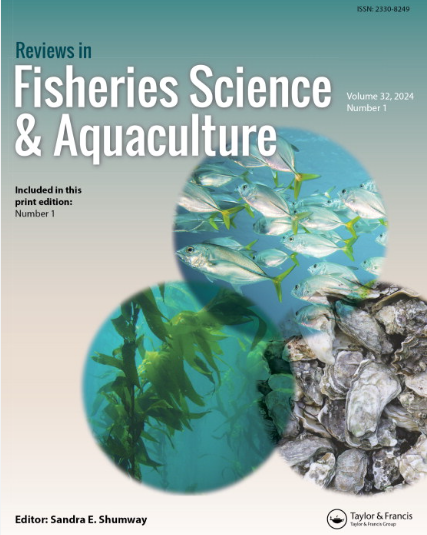鱼类的好斗性
IF 5.3
1区 农林科学
Q1 FISHERIES
引用次数: 4
摘要
摘要本文综述了目前有关鱼类刺头性的研究现状。科学文献中的记录从详细的描述到简短的注释和简单的评论都有。在465年(1555 ~ 2020年)的时间跨度内,共鉴定出60科至少164种具有斗头性。骨质疏松背后的主要骨学特征似乎是副突骨的缩短或变形,这导致椎体和额叶区域的额外变形。有时还会观察到其他颅骨、眼睛和舌头的变形和异常,这取决于肿胀的严重程度。尽管发育原因可能与放光翼目动物不同,因为它们的颅骨有不同的组织,但在无鳃目动物中也会遇到可能的病例。在世界范围内都可以发现这种疾病的自然情况,涉及各种环境和生活方式(淡水、咸淡水和海洋环境;底栖、浅海和远洋物种)。从胚胎到成年的所有生命阶段都可以发现病例,这表明它不一定会导致生命早期死亡。有一些证据表明,自然选择不利于头脑迟钝的人,可能是因为他们的口部、感觉器官功能不正常,可能还有大脑变形。大量的大头鱼主要见于水产养殖中,但在一些地方也可在野外发现适量的大头鱼。在野外异常高的发生率通常归因于污染,不正常的水化学参数,或温度。然而,它通常推测因果关系。根据文献综述,有几个致病因素,包括基因突变和胚胎环境条件(有毒和无毒)影响发育的支持。在文献中使用的术语“puheadeness”并不是一种明确定义的病理学,而是一套具有相似表型表达的病理条件。本文章由计算机程序翻译,如有差异,请以英文原文为准。
Pugheadedness in Fishes
Abstract This review summarizes the current state of knowledge of pugheadedness in fish. Records in the scientific literature range from detailed descriptions to brief notes and mere remarks. In total, at least 164 species from 60 families were identified to exhibit pugheadedness, with records published over a span of 465 years (1555 − 2020). The main osteological feature behind pugheadedness appears to be shortening or deformation of the parasphenoid bone, which leads to additional deformations of the ethmovomer- and frontal region. Several other deformations and abnormalities of other cranial bones, eyes, and tongue are occasionally observed, depending on the severity of the pugheadedness. Possible cases in elasmobranchs are also encountered, although the developmental causation may differ from actinopterygians, since their crania have a different organization. Natural cases of pugheadedness are found world-wide, covering a wide range of environments and lifestyles (freshwater-, brackish- and marine environments; benthic, neritic and pelagic species). Cases are found in all life-stages, from embryo to mature adults, suggesting that it does not necessarily lead to early-life mortality. There is some evidence for natural selection acting against pugheaded individuals, likely because of e.g. inappropriately functioning mouth parts, sense organs, and possibly brain deformation. High numbers of pugheads are mainly found in aquaculture, but moderate numbers have been found at some localities also in the wild. Abnormally high occurrence in the wild is commonly attributed to pollution, non-normal water chemistry parameters, or temperature. The causation, however, it typically speculated upon. Based on the reviewed literature, there is support for several causative factors, including genetic mutation and embryonic environmental conditions (toxic and non-toxic) affecting development. Pugheadedness, as the term has been used in the literature, is not a single well-defined pathology, but rather a suite of pathological conditions with similar phenotypic expression.
求助全文
通过发布文献求助,成功后即可免费获取论文全文。
去求助
来源期刊

Reviews in Fisheries Science & Aquaculture
FISHERIES-
CiteScore
25.20
自引率
0.90%
发文量
19
期刊介绍:
Reviews in Fisheries Science & Aquaculture provides an important forum for the publication of up-to-date reviews covering a broad range of subject areas including management, aquaculture, taxonomy, behavior, stock identification, genetics, nutrition, and physiology. Issues concerning finfish and aquatic invertebrates prized for their economic or recreational importance, their value as indicators of environmental health, or their natural beauty are addressed. An important resource that keeps you apprised of the latest changes in the field, each issue of Reviews in Fisheries Science & Aquaculture presents useful information to fisheries and aquaculture scientists in academia, state and federal natural resources agencies, and the private sector.
 求助内容:
求助内容: 应助结果提醒方式:
应助结果提醒方式:


